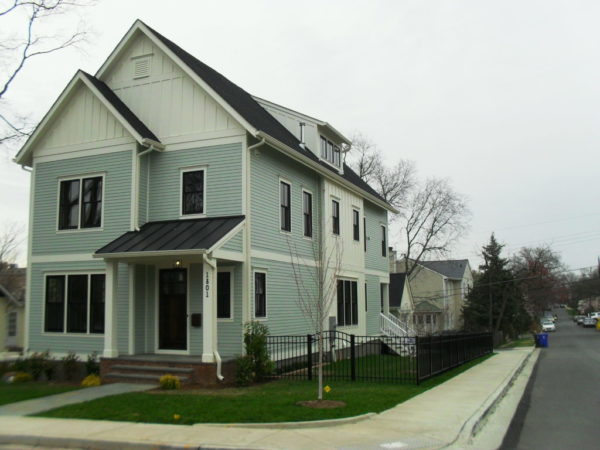Search Results for "accessory dwelling"
 Progressive Voice is a weekly opinion column. The views and opinions expressed in the column are those of the individual authors and do not necessarily reflect the views of their organizations or ARLnow.com.
Progressive Voice is a weekly opinion column. The views and opinions expressed in the column are those of the individual authors and do not necessarily reflect the views of their organizations or ARLnow.com.
By: Lisa Nisenson
Last week, former State Senator and Arlington County Board member Mary Margaret Whipple kicked off Affordable Housing month with a Progressive Voice column advocating more housing options, such as introducing small multi-family dwellings and accessory dwellings (ADs). In making the case, Senator Whipple cited the benefits of housing variety, while acknowledging concerns about how new housing types fit into existing communities.
Of the expanded housing options, accessory units such as backyard cottages and in-law suites, have the greatest near-term potential to add lower-cost housing options across the County.
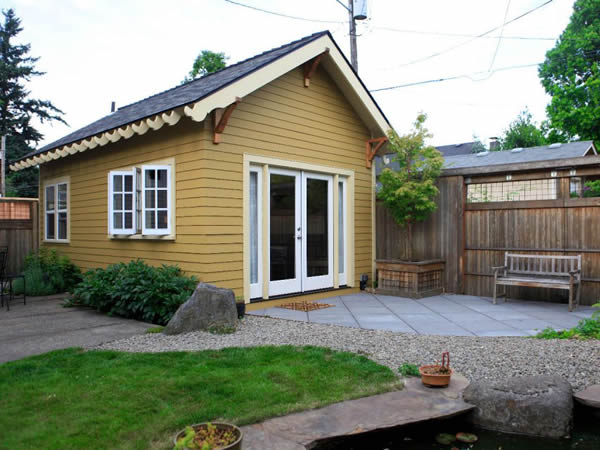 In 2008, Arlington updated codes and regulations for accessory units, though homeowners and construction companies still face code barriers that outweigh the benefits of constructing ADs. While safety — such as fire codes — drives many of the requirements, other elements related to parking and design deserve closer scrutiny.
In 2008, Arlington updated codes and regulations for accessory units, though homeowners and construction companies still face code barriers that outweigh the benefits of constructing ADs. While safety — such as fire codes — drives many of the requirements, other elements related to parking and design deserve closer scrutiny.
The stated purpose for these elements is largely to lower impacts on surrounding properties, though it is unclear (1) whether the impacts exist to the degree anticipated and (2) whether the required design requirements effectively prevent or reduce impacts. Given the housing pressures on an increasing number of Arlington residents, our entire community needs to come together on a platform of “what works” rather than expansive code written to anticipate and regulate every “what if.”
Fortunately, other cities have adopted — and fine-tuned — programs that offer ideas for shaping policies, programs and design elements for neighborhood-friendly accessory units. Here is a snapshot of how programs are shaping up:
Portland, Oregon: In general, Portland has the most ambitious AD program with lower parking requirements and permit fee reductions. While most cities with ADs require owner occupancy either in the main or accessory unit, Portland eliminated this rule in 1998. Three years ago, the state surveyed homeowners to determine (1) how ADs are used and (2) information on concerns such as parking.
The results? By and large, ADs are rented for out for extra income, typically to a single occupant. For parking, one-third of units report using the street (for the other units, 20% of dwellers do not own a car or homeowners provide off-street parking). Portland also places a high value on design and quality.
Seattle, Washington: Seattle has taken a more incremental and targeted approach to rolling out its AD program. Like Arlington, Seattle manages parking (though based on proximity to transit instead of on-street parking capacity), minimum lot sizes and design standards. Also like Arlington, Seattle’s housing crisis is driving a renewed effort for promoting accessory units through regulatory reform and incentives.
Novato, California: Novato created a new class of units: Junior Accessory Dwelling Units. These units are modified interiors within existing homes to create a separate living space. The city waives requirements for parking and fire codes while making special provisions for building small-scale kitchen facilities.
As it responds to escalating housing costs, Arlington should consider other trends affecting housing. New mobility options, notably bike share, car share such as Car2Go and on-demand ride hailing — such as Uber — are helping drive down car ownership rates and the related need for parking.
Also, an increasing number of retiring baby boomers are finding decreasing options for “aging in place” and “aging in neighborhood.” Yet there are few downsizing options other than apartments, and restrictive rules prevent the use of space in existing homes to provide a downsizing option while giving homeowners income to cover taxes and maintenance.
A big wild card is the availability of short term rentals — like Airbnb — that were barely on the radar in 2008, but are now reshaping parts of the real estate and hospitality industry. Here in Arlington, our County Board is considering the legal and tax framework for short term rentals. The Virginia General Assembly is also expected to revisit statewide legislation that could restrict local governments’ ability to regulate short-term rentals.
Currently, Arlington’s code makes building guest houses for temporary guests easier than building accessory units for long-term, stable renters. Without new rules, the County may be in a position where economic incentives favor “Airbnb cottages” over new, stable housing units.
As Arlington implements the Affordable Housing Master Plan and rules for accessory dwellings, look for discussions on allowing detached dwelling units (as opposed to attached or in-house units currently allowed), fire code requirements, site requirements such as lot coverage and enforcement.
If you are new to the topic of ADs, the website Accesorydwellings.org is an exhaustive resource, with links to a design gallery, research, policies and case studies.
Lisa Nisenson is Founder of the urban planning startup GreaterPlaces, named a “Top 10” resource by the planning authority Planetizen. She holds positions on the American Planning Association’s Sustainable Communities Division and Smart City Task Force. She is a long time Arlington civic advocate from Lyon Park.
Image: Raleigh, N.C.
Address: 4315 15th Street N.
Neighborhood: Waverly Hills
Listed: $2,199,000
This unique property is all about urban living at its finest! Classic Cottages and Backyard Cottages present their latest joint project in North Arlington to include a 4 bedroom, 4.5 bath single family home with an oversized one car garage and a 1 bed/bath detached accessory dwelling unit [ADU].
This project includes collaboration with nationally recognized small space living innovator URBANEER, for the detached ADU layout which includes their patented movable wall system. The movable wall allows for flexible social & bedroom configurations to maximize space and create open concept living. There are many benefits and uses from investing in a Backyard Cottage, including long-term rental income, for a family member, or flexible space to serve immediate or future needs.
Truly a must-see! The main house has a large kitchen with breakfast nook overlooking the great room which features beautiful wood beams and a gas fireplace. Primary bedroom has two walk-in closets, double vanities, large shower and soaking tub. Spacious secondary bedrooms offer plenty of natural light and each have their own bathrooms and outfitted closets.
The lower level of the home features luxury vinyl planks throughout, recessed lighting, wet bar, guest bedroom & bath and oversized fitness room. Home includes outdoor patio with built-in firepit and decorative string lights.
This incredible one-of-a-kind property in Waverly Hills near Washington-Liberty High School is only a 12-minute walk to Ballston Metro!
Listed by:
Michelle Lynch
Classic Cottages Realty, LLC
571-366-3324
[email protected]
www.ccottages.com
Did you know, as an Arlington property owner you can now add a small, completely detached second home to your property as a matter of right? Backyard.Homes, a local builder, is here to help you unlock that right.
The County Board approved detached Accessory Dwelling Units (ADUs) last summer. As such, all Arlington property owners are now eligible, provided you can fit the home on your property within setback and lot coverage requirements, and the owner occupies either of the two homes.
Backyard.Home offers several ADU models designed and built specifically to meet Arlington’s requirements (as well as the District of Columbia). Each property and situation can be a little different, so please reach out to Backyard.Homes for a free consultation.
Why build a second home on your property?
Small, second homes can provide a host of benefits to property owners, especially where space is tight or you’re looking to add a new income stream. Here are a few ways an ADU could benefit you and your family:
- An ADU can provide a perfect home for aging parents or family members. This keeps your loved ones close and comfortable, while still maintaining their independence. The homes can be single-story and accessible for improved safety, and equipped with cameras and smart-home devices for improved monitoring, if needed.
- An ADU can be rented for extra income, either with short or long term leases. Renting an ADU as opposed to a bedroom or basement provides separation and privacy, and yields higher rents.
- An ADU provides extra space for visiting guests or family visits.
- An ADU can house a returning college student while they get their feet under them, or can be part of your childcare solution by providing space for an au pair.
- You can personally downsize and move into the ADU and rent out your primary home.
Is an ADU a good real estate investment?
Building an ADU can be among the best investments you can make. You already own the property so there’s no land cost, and unlike buying a condo to rent, there are no monthly condo association fees that erode your rental income.
While rental rates depend on a variety of factors, for a typical unit and site in Arlington it’s very achievable to meet or exceed the one percent rule of thumb (monthly rent equals or exceeds 1% of your total cost to build). That’s very hard to find in comparable real estate investments in this area. Plus, your up-front cost is going to be significantly lower than, say, buying a newly constructed condo.
Address: 911 N. Daniel Street
Neighborhood: Lyon Park
Listed Price: $1,544,200
Open: Virtual & Private Tours Available
Just listed! Classic Cottages unveils its stunning home renovation in the heart of Lyon Park, just blocks from Clarendon.
This unique property features a charming brick home plus a brand new detached Accessory Dwelling Unit (ADU) built by Backyard Cottages, a sister company of local builder Classic Cottages. This ADU is the first of four permitted Accessory Dwelling Units in Arlington by Backyard Cottages.
Featuring 4 beds, 3 full baths, and 1 half bath, this home showcases open concept living and a light & airy theme through the home’s farmhouse inspired finishes. From shiplap accents and white painted brick to honey toned hardwood floors and subway tile, this home exudes southern charm within every room.
The detached ADU features an additional 1 full bedroom and 1 full bathroom. The ADU is flooded with light from the large black-cladded windows, skylights and recessed cans. Light painted walls complement the neutral white and black finishes within the kitchen, bathroom and bedroom spaces, creating a clean, simplistic aesthetic perfect for urban living. The ADU is completely outfitted with all living essentials: refrigerator, microwave, dishwasher, sink, washer, dryer, murphy bed and plentiful storage!
Together, the home & ADU feature a total of 3,412 finished sq. ft. Many Arlington residents are beginning to invest in their own backyards as they come to understand the beneficial uses that owning an ADU can provide such as separate living quarters for a family member, guest house for visitors or long-term rental income.
Contact Backyard Cottages today to schedule a private tour or take the virtual tour online.
Schools: Long Branch Elementary School, Jefferson Middle School, Washington-Liberty High School.
Listed by:
Pierce Tracy
Classic Cottages Realty LLC
433 E Monroe Avenue
Alexandria, VA 22301
Phone: 703-350-6365
[email protected]
www.backyardcottages.com
Address: 1801 N. Bryan Street
Neighborhood: Lyon Village
Listed: $1,995,000
Open: Saturday, April 21 from 12-4 p.m. and Sunday, April 22 from 1-4 p.m.
Stop by Saturday, April 21 from 12-2 p.m. to chat with Dave Springberg of Spring Street Development, and to preview this exceptional home in Lyon Village.
With four finished levels, the home offers space for everyone and everything, including an Accessory Dwelling Unit in the sun-filled lower level.
Desirable details include wainscoting, wood floors on two levels, coffered ceiling and fireplace in the family room. Upstairs there are three bedrooms and three baths and the top floor retreat has a fourth bedroom, bathroom and versatile space for an office, gym or playroom.
Gorgeous kitchen featuring crisp white cabinetry, blue island and quartz countertops. The home provides several dining options — either casual or traditional — along with a butler’s pantry and mudroom entry from the garage.
Walk to Clarendon for Metro, restaurants, shops, parks and bikepath.
Key/Science Focus, Swanson and Washington-Lee Schools.
Listed by:
Betsy Twigg
Washington Fine Properties
Phone: 703-967-4391
[email protected]
http://www.wfp.com/index.asp
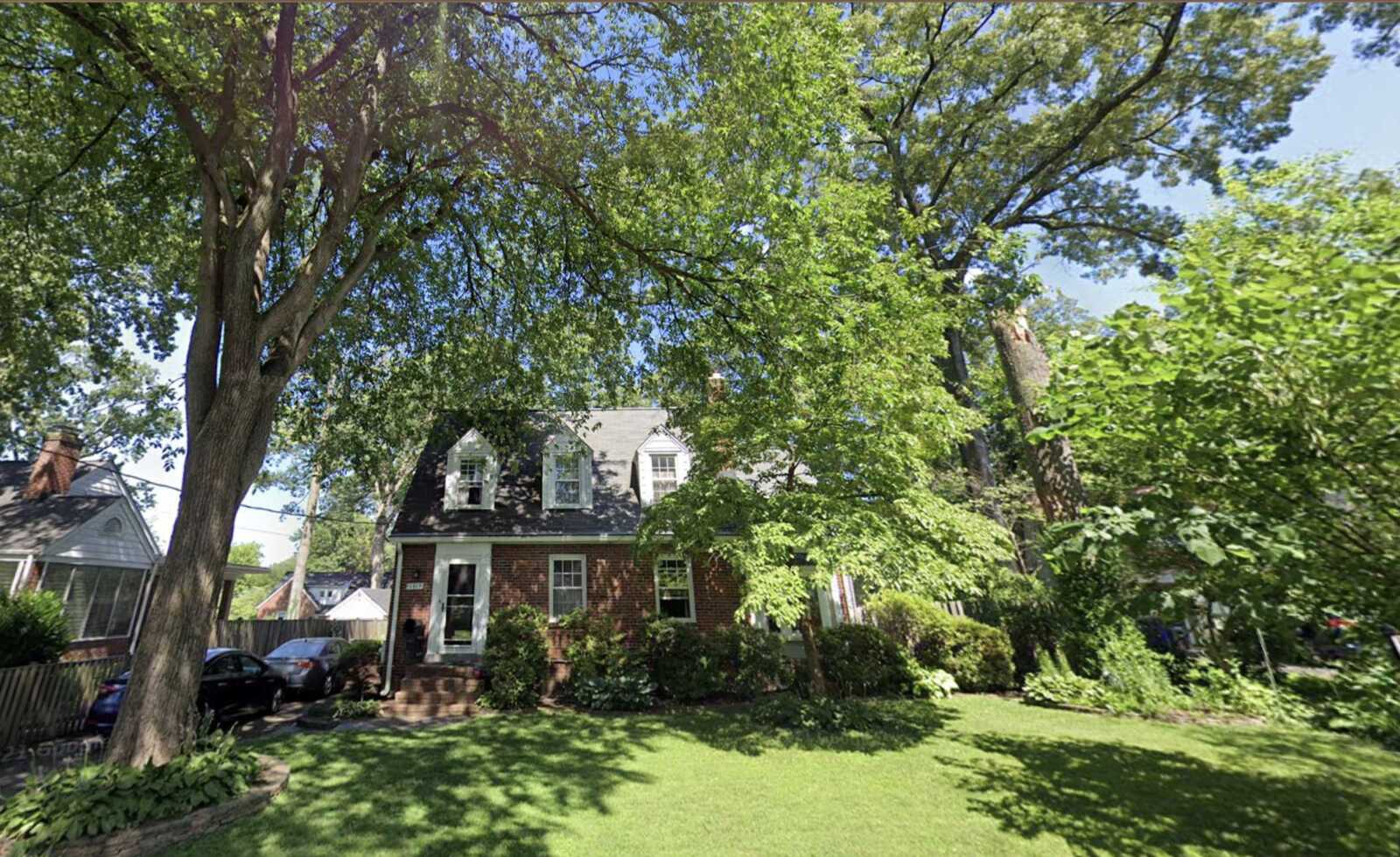
Last month, some neighbors told a developer they would “oppose any attempt to obtain permits” for a duplex in the Tara-Leeway Heights neighborhood, and the developer backed down.
McLean-based BeaconCrest Homes bought a single-family home at 1313 N. Harrison Street, an area residents have dubbed “Larchmont.” When it announced to neighbors its plans to build a duplex, a skirmish over the lot’s future — based on a provision in a deed from 1938 — ensued.
The tiff began in early August and ended with BeaconCrest agreeing to build a single-family home almost two weeks ago, according to correspondence between residents and the developer. The letters were published in an email newsletter authored by former Arlington County Board candidate Natalie Roy, tracking Missing Middle or “Expanded Housing Options” developments.
Two months ago, Arlington County began accepting applications for plans to build 2-6 unit homes where previously only single-family homes were allowed. Staff have approved five projects and 18 are under review, while the Larchmont neighbors fought BeaconCrest and some Alcova Heights residents are asking the county to reject some zoning changes associated with two EHO proposals.
On July 31, BeaconCrest bought 1313 N. Harrison Street for $950,000, according to Arlington County property records. In a letter dated Aug. 3, the developer told neighbors its plans despite an 85-year-old deed attached to the home saying “not more than one house shall be constructed upon the lot.”
Based on its analysis, the developer said it doubted this would be enforceable. Touting their previous experience going up against developers, neighbors disagreed, saying the law and Arlington County zoning code are on their side.
“As you may be aware, the Larchmont neighborhood has a history of successfully halting developers’ attempts to ignore similar existing deeds and covenants… e.g., 1320 Greenbrier and 1500 Harrison, among others,” the letter said.
They pointed to a provision in the county zoning code saying the more restrictive agreement, whether county code or existing agreements, controls what happens on a property.
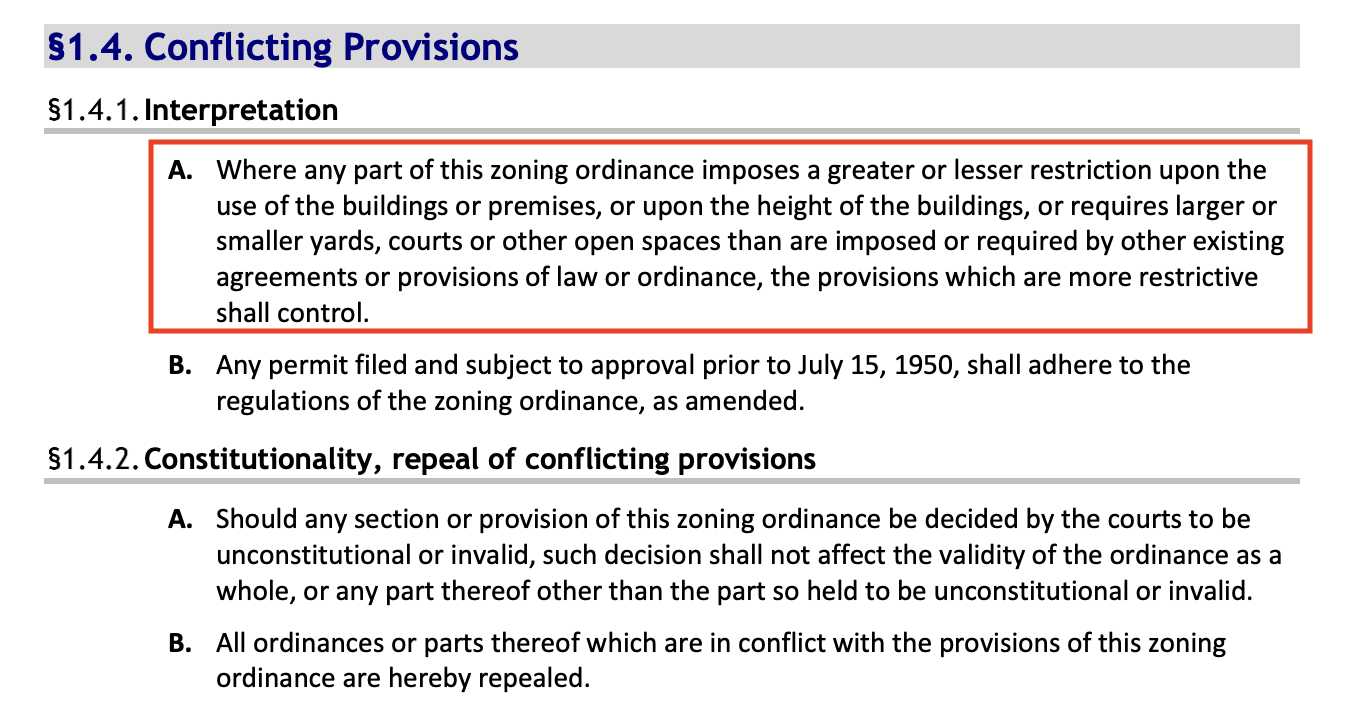
Neighbors also accused the project of compounding unsafe traffic conditions on N. Harrison Street. They say drivers will slalom around parked vehicles on the narrow road to get between Washington and Langston Blvd.
“Your proposed development will only exacerbate this, endangering residents, including the many children who live on the block,” they said. “Adding multi-unit housing, which requires mandated space for on-street parking, will result in further traffic and safety issues.”
Street parking has been discontinued on some parts of N. Harrison Street for safety reasons, the letter says, noting other residents have asked the county for more parking restrictions to mitigate these traffic issues.
In her “EHO Watch” newsletter, Roy, who launched her campaign earlier this year opposing Missing Middle, called this a “win.”
“The takeaway from this win is that neighborhood covenants — where they exist and are germane — can be effective in promoting Arlington County’s stated Comprehensive Goals of having a diversity of densities while preserving existing neighborhoods,” she wrote.
“The other key point is it takes considerable volunteer time, energy, and organizing prowess by neighbors, to not only be vigilant but to act fast,” she continued.
Missing Middle advocates, including the leaders of pro-housing group YIMBYs of Northern Virginia, are celebrating their own wins, however. Jane Green recently lauded newly approved plans to turn a dilapidated carriage house within walking distance of the Ballston Metro station into a 6-plex.
An old real estate listing for the property she found had touted that the new owner could build a 5-bedroom, 4-bathroom custom-built home and convert the existing carriage house into a 1-bedroom, 1-bathroom accessory dwelling unit.
Here is #MissingMiddle in action 🧵: This home + carriage house sold in 1987 for $178,900. It is now in very rough shape. It is also half a mile from the Ballston Metro (4611 Carlin Springs Rd). https://t.co/bo2Meu5AZK pic.twitter.com/wZkjwckFnc
— Jane Fiegen Green (@janefgreen) August 29, 2023

The specter of Missing Middle haunts the slate of candidates for Arlington County Board.
Two months ago, the County Board allowed the by-right construction of 2-6 unit buildings on lots previously zoned for single-family homes.
Prior to voting for the changes, Board Chair Christian Dorsey and member Katie Cristol announced that they would not be seeking reelection. Those vying to replace them vary widely in their stances on Missing Middle, though a forum last week hosted by Arlington County Democratic Committee revealed areas of common ground.
Some Democrat hopefuls opined about how the process leading up to the zoning changes divided the community and revealed how renters are underrepresented in civic life. Mostly, the candidates suggested that they are focused on life after Missing Middle and supporting other policies to help people afford to live in Arlington.
“We don’t get a do-over. There is no do-over, there is only a do-next,” said policy analyst Maureen Coffey. “We need to learn from this process, what went wrong — never repeat that ever again — and move forward, bringing everyone to the table to talk about how this is going to play out and what we need to solve our housing and larger issues.”
All of the candidates agreed the county will need to analyze data before deciding on next steps.
“Monitoring closely is going to be really important — especially monitoring on elements of diversity and affordability,” said Susan Cunningham, who has run for County Board before as an independent and criticized the zoning changes.
Cunningham suggested modifying rules for accessory dwelling units and for lot coverage, which could curb the development of large homes oft-derided as “McMansions.”
“My biggest problem with Missing Middle was not just the process but the fact that we did not do a comprehensive look at housing,” Cunningham said. “Housing is complicated and housing this whole community in its diversity and amazingness is also complicated, and we oversimplified that in my opinion.”
To that end, another candidate opposed to the changes, real estate agent Natalie Roy, detailed her views on housing in a three-part plan. It includes implementing a proposal from the Arlington branch of the NAACP to prevent the displacement of low-income residents.
Roy said the county should provide a public dashboard showing where and what kind of permits are issued, as well as the selling price for completed units. Arlington County has already committed to publishing this data once it becomes available.
Missing Middle supporter Jonathan Dromgoole said he too is watching where the units are built. Next, he said, the county should focus on shoring up the dwindling supply of relatively inexpensive, market-rate units. This is something Arlington County is already looking at as these units are continuously lost to redevelopment and rehabilitation.
Former NAACP Arlington Branch president Julius “J.D.” Spain, Sr. said he is thinking farther outside the box.
The following in-depth local reporting was supported by the ARLnow Press Club. Join today to support local journalism and to get an early look at what we’re planning to cover each day.
Last week, the Arlington County Board voted unanimously to allow homeowners, builders and developers to convert or build new 2-6 unit homes throughout the county.
Those changes will not go into effect until July 1 and it will be even longer before such buildings actually spring up.
“Nothing will be built a year from now. It may be permitted, but it won’t be built,” Arlington County Board Chair Christian Dorsey predicted to ARLnow after the vote last Wednesday. “We’re really going to have to wait, I think, 18 months before we actually have anything we can sink our teeth into.”
Dorsey seemed confident that county staff have sufficient direction to prepare for the first “Missing Middle” housing applications.
“[Staff] are already going to work on ‘What are we going to do with permitting? What are we doing to set up a structure?’ but then, also, ‘What are the technical, advisory resources that we’re going to make available to allow people to navigate through it?'” he said.
For staff and for builders, the county is entering uncharted waters.
“It’s really new,” Dorsey said. “The existing duplexes, triplexes and townhouses are fairly matured in this county, but the other forms, we haven’t really seen them in recent history,” he said.
While it will be at least a year and a half before there is anything to see, behind the scenes, activity is already humming.
County staff are working on educational materials and getting Permit Arlington, the county’s online permitting system, ready. A few local developers have put out feelers regarding where to build townhomes. County Board members are already directing planning staff to study other aspects of the zoning code to see how standards can be strengthened to prevent tree canopy loss.
Staff gets to work
The next three months will be busy for county staff.
Staff will put out educational materials for property owners and building industry professionals explaining possibilities and requirements.
County planners will study up for meetings with people who want to build EHO units — Arlington’s term of art for what it just allowed is “Expanded Housing Options” — which are being encouraging so people can go over code requirements and their applications with staff before submitting them. Lastly, they will add a zoning permit application for EHO development to Permit Arlington.
ARLnow recently reported on issues with the online permitting system. Builders and architects blame these issues, along with the need for pre-construction meetings, for construction delays and more expensive projects. They tell us that the staffing level dedicated to reviewing applications will determine how successful Arlington is in encouraging EHO construction.
“Having a consistent plan review process would be the most helpful way that the county could support this new type of initiative,” David Tracy, the president of local home-building company Classic Cottages, tells ARLnow. “The permitting piece in Arlington is rigorous already [for single-family detached homes]. This is supposed to go through more or less the same process and that is a months-long process.”
What will be built and where?
While 2-6 unit buildings are broadly allowed in all districts previously zoned only for single-family detached dwellings, some lots will be too small for certain kinds of projects and others are ineligible because the county says they could be assembled with other properties for bigger development projects.
A cap of 58 approved projects per year for five years, distributed geographically, will to some degree dictate where these buildings go.
Some in the home-design and building industry predict that despite the nearly blanket allowance, EHO homes will likely be concentrated around walkable amenities.
“My own personal view is that there need to be walkable amenities around in order for people to want to live in this type of house,” Tracy said. “If there’s a condo building in the western part of the county where the zoning is R-10 and R-20, the head-scratcher is why would you buy a condo or townhome, which I associate… with a more urban existence.”
Tracy said the cap has benefit and trade-offs. It might help regulate the review process but it could create a “false scarcity” that dissuades people from undertaking EHO projects.
“The worst thing you can do for a builder is create uncertainty,” he said, adding that they cannot afford to wait a year if the cap is hit and their project misses the boat. “You’re going to distort the market.”
County Board member Katie Cristol tried to make that point during the rezoning approval, arguing that uncertainty will keep Missing Middle units from being built, but her motion to double the cap was voted down.
County Board Vice-Chair Libby Garvey told supporters in an email this week that she pushed for these two measures.
“I have consistently worked to make these changes more of a pilot than sweeping changes,” said Garvey, who for a while led the charge against the never-built Columbia Pike streetcar. “While the final adoption is not quite as limited or as dispersed as I would like, I think it will allow us to see how this works out over time and over different portions of the County.”
Architect Ethan Marsh expects Missing Middle-type homes will pop up near transit, such as in Lyon Village and Lyon Park, which flank the Clarendon and Courthouse neighborhoods along the Orange and Silver lines.
But the building might extend to neighborhoods a bit further afield from transit, like Marsh’s former neighborhood of Penrose.
“In those areas, you can walk to Columbia Pike and catch a bus, which I did often, or get to Clarendon on a scooter,” he said. “Those areas lend themselves better to Missing Middle because you can increase density without increasing parking, because you have walkability… This area sort of markets itself.”
It seemingly already has. In a conversation in a local neighborhood email listserv, shared with ARLnow, someone who owns a property in Lyon Village explained how he would make more money replacing his $1.2 million house with a 3-unit townhouse, with each unit listed around $1.5 million, over one large, $2.7 million single-family home. Citing concerns of overcrowding in the neighborhood school his kids attend, the individual said he would not build a 6-plex.
Meanwhile, a speculative development brochure shared with ARLnow seeks investors for a similar development planned for a single-family colonial home, built in 1947, in Lyon Park.
The home, described as “in disrepair” and on an “under-utilized” site, was sold for around $950,000 this February to a registered LLC named for the home’s address, according to county property records. The investment pitch proposes envisions building three townhouses, which would sell for just over $1.22 million each, which would still be less expensive than many older single-family homes in the area.
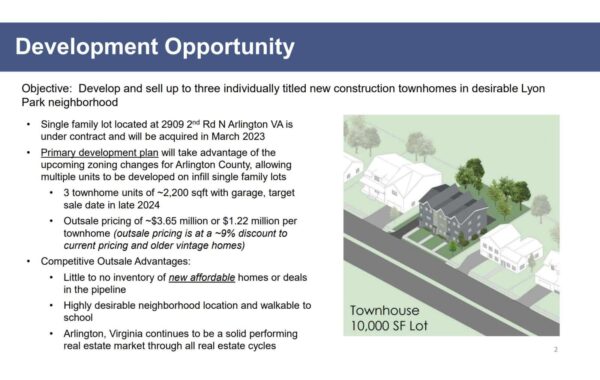
Over the last couple of years, people have debated how attainable these units would be, particularly to people making less than $100,000 per year. ARLnow asked a few local nonprofit affordable housing providers if they would be building Missing Middle-type homes to provide homeownership opportunities to lower-income residents.
Two said they would not be, but they support the changes because of how they will expand housing. The local Habitat for Humanity chapter, however, indicated interest.
“This change opens up large portions of the County where we were effectively priced out before, and we will be working hard to make the new policy a successful reality,” Director of Donor Engagement & Communications Liz Salter told ARLnow.
She said Habitat has “considerable experience” building stacked flats, two-over-twos and smaller multifamily structures in D.C. for homeownership units.
“And we have successfully built 3+ bedroom units within the smaller envelopes that would be characteristic of an [EHO] multiplex,” she said.
Planning for growth
Missing Middle critics often predicted overcrowding at schools, some of which already have not-so-temporary trailers offsetting enrollment increases.
For the part of Arlington Public Schools, it says the rezoning adoption will have impacts small enough not to significantly affect enrollment planning in the near term. APS believes Missing Middle will add roughly nine to 13 students per year, spread across elementary, middle and high schools.
“The Missing Middle housing growth should be similar to what to the growth in accessory dwellings, which were approved in 2017,” APS spokesman Frank Bellavia says, noting that 99 parcels across Arlington have ADUs.
He did say that the annual cap on projects would be beneficial.
“The caps established for the first five years of the MM makes it more manageable for APS to absorb any increase in new students,” he said. “APS closely collaborates with Arlington County staff on projections and any changes to the pace of development will be on our radar.”
Addressing overcrowding, Bellavia said APS has a few planning processes through which it can address growth by expanding existing schools, repurposing current space or collaborating with the county on other types of expansions.
“The most recent APS Capital Improvement Plan and bond is investing in a new facility that will expand the number of students served by the Arlington Career Center,” he said. “The next CIP will also include a schedule and funds to begin renovating and modernizing existing APS facilities. We believe that the combined initiatives will help absorb any increases in enrollment due to Missing Middle.”
Meanwhile, those who like crunching numbers can eventually expect a lot of data tracking growth related to Missing Middle.
Permit applications and approvals will be published in real-time and likely added to interactive map promoted through newsletters. Annual reports will include data on:
- EHO types, unit numbers and locations
- New construction vs. renovations
- Owner and renter-occupation rates
- Lot size and coverage and impervious surface coverage
- Tree planting and retention
- Parking spaces provided per unit
- Number and location of requested and approved parking reductions
- Demographics of residents living in EHO development, if possible
- APS student generation
In the cases where new EHO construction replaces a dwelling, for interest, the county is also interested in tracking whether the owner or renters live inside.
The data would provide a clearer picture of whether predictions from critics are coming to pass, including one that the changes will yield more 1-2 bedroom rentals than family-sized, 3-4 bedroom units for sale.
The future of McMansions
The foil to EHO development has long been the so-called McMansion, a pejorative for new single-family homes derided by critics as oversized, cookie cutter and cheaply built.
Some proponents have reasoned that if the zoning code can allow for these buildings housing one family, it should allow structures with the same footprint to house multiple families. Now, the question is whether large single-family homes might see additional county scrutiny.
The Arlington County Board has encouraged staff to prioritize studying lot coverage and building placement standards to find ways to preserve trees from being cut down. The new zoning code requires between four and eight trees per unit on properties developed with EHOs.
Members and Planning Commissioners are also interested in adding to the zoning code a standard for floor area ratio, or the ratio of a building’s base to the size of the lot it is built on.
“We’re hearing a lot about this, I’d love to move it forward faster,” Garvey said during a budget work session with the Department of Community Planning, Housing and Development.
Planning Director Anthony Fusarelli responded that staff may be overextended and that work could not begin until other studies wrapped up in 2024.
Cristol recommended implementing “quick-strike” rule changes for lot coverage that could come out of an update to Arlington’s Forestry and Natural Resources Plan, a final draft of which is expected to be ready this spring or summer.
This will, she said, “really serve this strongly held desire to protect trees in development of low-density properties.”
She warned that without determining community priorities for lot coverage, the county could end up in another contentious policy debate.
“I’m very eager to take up this conversation and I think there are a lot of interesting ideas,” she said. “I hope we can find a little capacity to pursue that goal overall.”
The Arlington County Board approved zoning changes to accommodate “missing middle” housing units, such as duplexes, triplexes, and small multi-family buildings, in areas designated for single-family homes.
While some argue that this addresses exclusionary zoning and promotes affordable housing, others question the benefits to communities and housing diversity.
Unlike “missing middle” housing units, accessory dwelling units (ADUs) have the potential to help address housing problems while also taking into account the concerns of both supporters and opponents of “missing middle” housing. ADUs offer homeowners flexibility in using them for personal or rental purposes, increasing housing supply, and preserving neighborhood character.
As constructive dialogue among stakeholders is essential for incorporating ADUs into local policies, Aroom steps in to provide a seamless solution for modern backyard studios and ADUs. Our designs, crafted by world-class architects, offer unique spatial experiences that can quickly and efficiently add space to your home.
Aroom streamlines the entire process, from design and permitting to manufacturing and collaborating with local contractors.
You can choose from our range of models, such as the 216 sq. ft. Model 21 for remote work or play, or the 560 sq. ft. Model 56 ADU, perfect for housing family members or generating rental income. We currently serve clients in D.C., Virginia, and Maryland, and we will continue to support local communities as they adapt to the evolving housing landscape.
Here is some helpful information about ADUs for your local region.
- Washington, D.C. | Accessible Dwelling Units Homeowners Manual
- Montgomery County, Maryland | Accessory Dwelling Units
- City of Alexandria, Virginia | Accessory Dwelling Unit Policy
- Arlington, Virginia | Accessory Dwelling Permit
- Fairfax County, Virginia | Accessory Living Units
We have a showroom can in Fairfax, Virginia and you can book a tour on a need basis. If you are interested in scheduling a virtual consultation before visiting, please click here to schedule a session.
Check out our intro video! We are also offering 10% discounts on all units by March 31st. Contact us at [email protected] and visit our website at www.
(Updated at 11:10 a.m.) Last night, the Arlington County Board took a landmark step to allow the by-right development of 2-6 unit buildings throughout the county.
After the unanimous vote around 6:45 p.m., and additional statements by Board members, the room erupted in cheers from supporters, who shook hands and hugged and high-fived each other. There were, reportedly, a few teary eyes.
A slow trickle of opponents left the room as the meeting wore on, but many remained, swapping their yellow signs against upzoning for blue headstones mourning the burial of the “Arlington Way,” the name for the pathways citizens have for influencing policy-making.
Talk of a policy change like this dates back a decade and, for some Board members, was tied to tearful remembrances of conversations with the late County Board member, Erik Gutshall. After Amazon agreed to come to Arlington, the conversation picked up steam.
Arlington’s first step to increase housing stock was to allow accessory dwelling units. Its second step last night culminated more than two years of study that saw the proposal rebranded and modified to respond to some community concerns such as parking, tree canopy, and the pace of development.
There was lots of celebration on Twitter for the changes, which will go into effect on July 1 of this year.
Thank you @Matt4Arlington @TakisKarantonis @kcristol @libbygarvey @CD4arlington for moving @ArlingtonVA forward! This teacher appreciates this historic moment of righting historical wrongs. #MissingMiddle l pic.twitter.com/XwKErcPNI2
— #TiredTeacher (@pondfamily) March 22, 2023
tonight Arlington passed one of the most progressive zoning reforms in the nation—due in large part to the work of @NAACPArlington, @VOICEVirginia, @TheGattoniCelli and @janefgreen’s YIMBYs of NoVA and many others 👏 https://t.co/ZwWDaukIxk
— dan reed 🦀🏳️🌈👋🏾 (@justupthepike) March 22, 2023
Arlington’s County Board deserves credit for carrying a version of Missing Middle across the finish line.
A ton of that credit should also go to Jane and the NoVA YIMBYs, who organized an entire progressive housing movement from the ground-up. It’s a gargantuan accomplishment. https://t.co/1EvB8RSXpP
— Kevin Saucedo-Broach (@KSBforVA) March 22, 2023
A theme in the speeches County Board members made last night was that change is already here and county leaders have to respond to make sure the real estate market works for more people who want to live in Arlington.
In a statement from the advocacy group Virginians Organized for Interfaith Community Engagement (VOICE), member Pat Findikoglu echoed this sentiment, noting that the county is already changing, with larger, more expensive single-family homes replacing more modest homes.
“Change in the housing market is inevitable,” she said. “How we shape it to meet new needs and still remain livable is the challenge. VOICE believes this Expanded Housing Options proposal does that.”
Board members made a few more compromises, removing a clause that would allow for fewer parking for homes close to certain bus networks, plus approving a five-year cap of 58 units per year and a method of dispersing allowable units by zoning district.
YIMBYs of Northern Virginia co-founder Jane Fiegen Green accepted these limitations on social media but still heralded the decision as a win. She said the limitations could result in “less housing than otherwise.”
“Our organization is concerned that limitations imposed on the policy will yield fewer homes, without any practical or political benefit,” YIMBYs of Northern Virginia said in a statement. “Yet beyond the zoning changes that will help end racial segregation in the County and bring forth more housing, the Missing Middle campaign has shown our neighbors that restrictions on density and growth damage their community’s ability to be welcoming, inclusive and forward-looking.”
One group opposed to the plan did not acknowledge the concessions in its colorful post-mortem.
“This County Board has plopped a half-baked cake on the table that Arlington residents must now eat,” said Arlingtonians for Our Sustainable Future’s Peter Rousselot. “Arlington County is flying blind on Missing Middle, but it’s Arlington residents who now are headed for a crash landing.”
(Updated at 9:40 p.m.) After years of consideration, and multiple days of public testimony and County Board discussion, one of Arlington’s most contentious local proposals in memory is becoming a reality.
The Arlington County Board voted unanimously Wednesday evening to approve allowing smaller multifamily structures — also known as Missing Middle — in what were heretofore neighborhoods of only single-family detached homes.
The vote will allow the by-right construction of buildings from duplexes to six-plexes, depending on lot size, with the units capped at four on certain smaller lots. The structures will be no larger, in height or footprint, than what’s allowed for single-family homes.
The vote also comes with a temporary cap: 58 such structures per year, for five years, geographically dispersed by zoning district. It also comes with minimums for off-street parking: half a parking spot per unit as the minimum 3/4 of a mile from Metro rail and 1/2 mile from certain bus stops and one spot per unit outside of transit zones.
Arlington County Board Chair Christian Dorsey called the previous single-family only zoning a “vestige of old times” in comments immediately following the vote on the measure, which he called a “reform” and “fundamental good policy.”
Dorsey, echoing other Board members who spoke of the expected future growth of Arlington’s population, expressed support for allowing more types of housing in all parts of Arlington, with greater affordability as an overarching goal. Currently, much of the redevelopment of older single-family homes has resulted in the construction of much larger and more expensive single-family homes.
“We are part of a dynamic vibrant community of Arlington that has for generations invested in the kind of living conditions that makes this the kind of place that most people value and naturally people will be attracted to,” Dorsey said. “That is not a bad thing, in fact, that is a damn good thing. We should think of how we accommodate that so that it continues to work well for as many people as it can.”
While the vote was unanimous, some Board members expressed concern about allowing up to six units in less transit-accessible parts of the county. Matt de Ferranti and Libby Garvey backed an amendment that would have limited more lots to only four units away from Metro corridors, but the amendment failed by a vote of 3-2.
Board member Takis Karantonis, in his remarks following the vote, noted the general disparity in age between supporters of the Missing Middle proposal, dubbed Expanded Housing Options by the county, and those who spoke against it, who were notably older on average.
“Now is the time to intervene: to shape change on our terms before change shapes us,” Karantonis said. “Enhancing housing options for Arlingtonians who live here today and those who will choose to live here tomorrow is one of the decisive actions we cannot afford not to take.”
“Whoa, we just de-segregated Arlington,” a supporter of the proposal said to another after the vote, seemingly in disbelief. Only a few other large localities in the U.S. have taken similar action to densify housing, including Minneapolis and Portland.
Elsewhere in the County Board room, opponents were holding up blue tombstones saying “R.I.P The Arlington Way” and balloons with a winged heart, saying “Forever in our hearts.” Since a draft Missing Middle proposal was first reported by ARLnow last May, opponents have predicted deleterious consequences from rezoning and decried what they characterized as a rushed process that did not include a sufficient level of study and community engagement.
Board member Matt de Ferranti spoke in favor of correcting a historic wrong — among other reasons for the vote — citing the county banning construction of row houses from the 1930s to 1960s. The County previously “protected the wealth of those already living in single-family neighborhoods,” he said.


